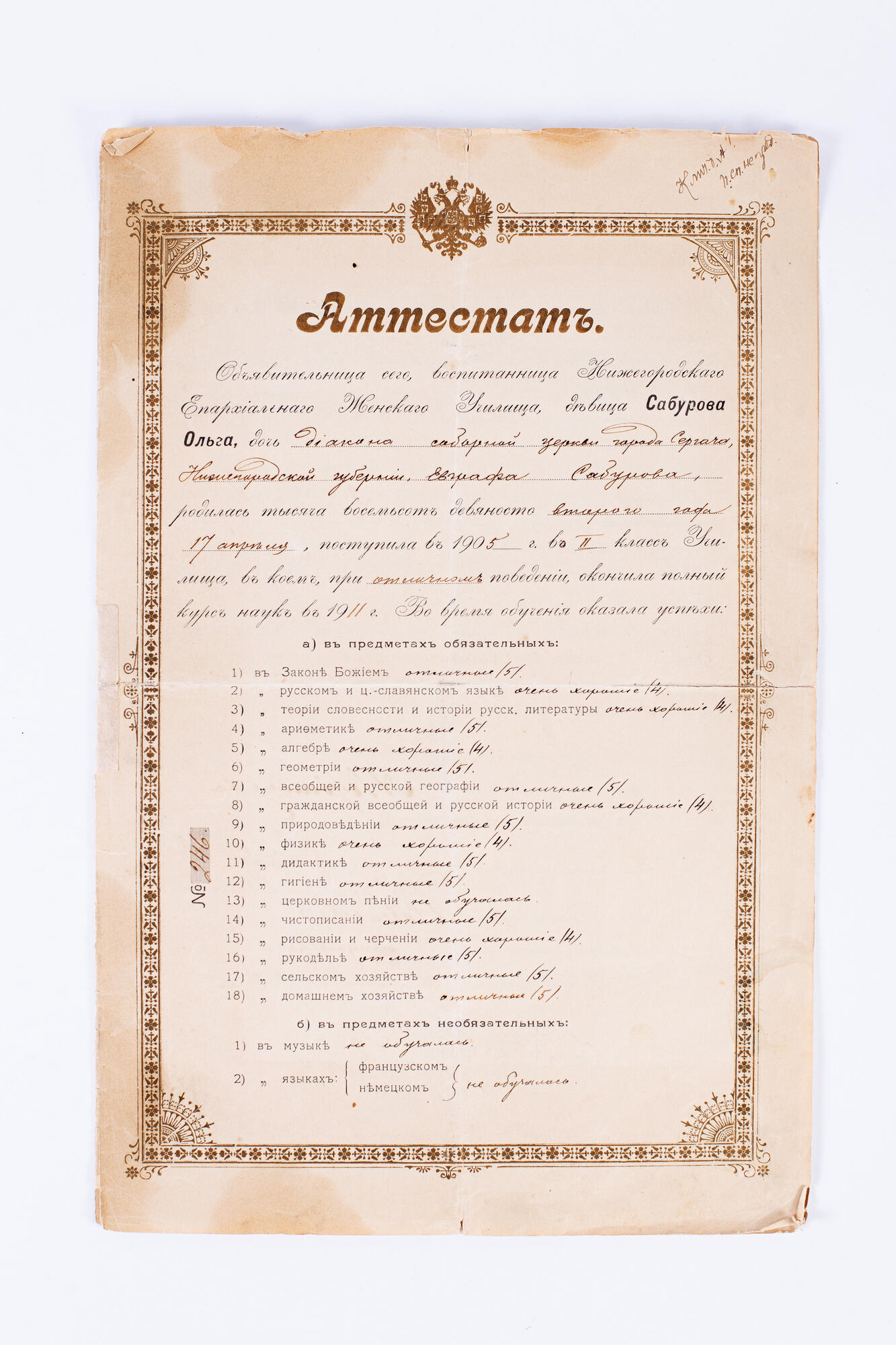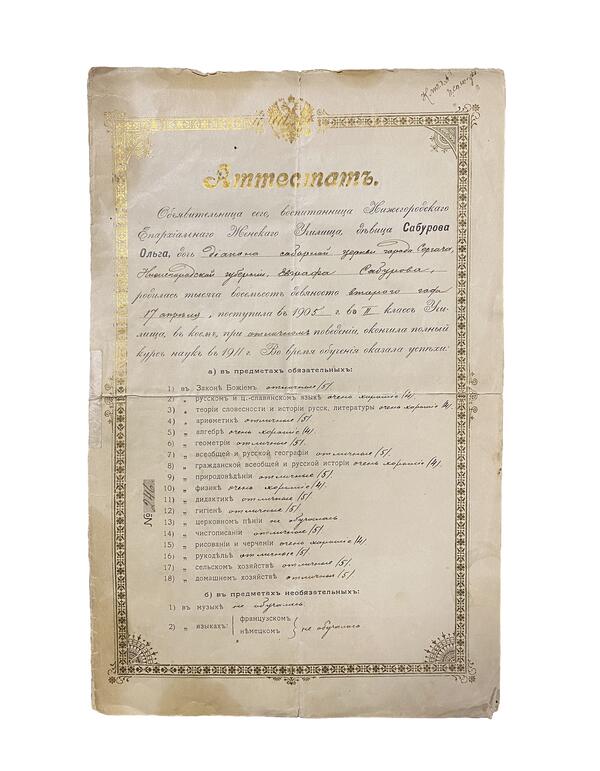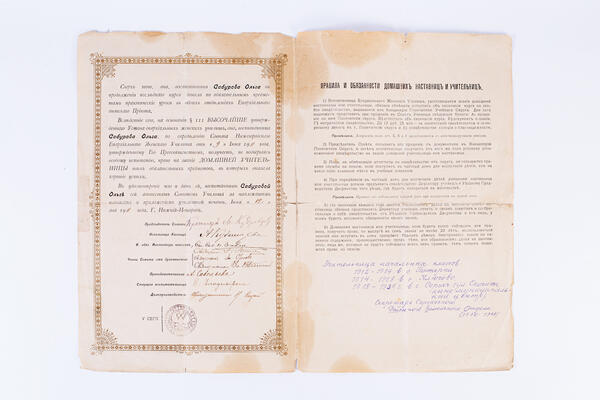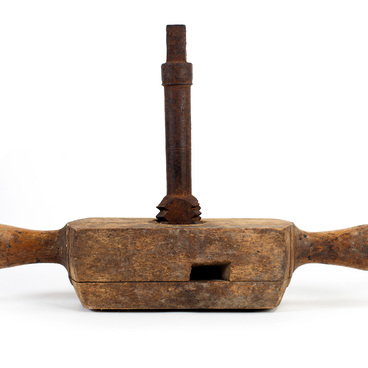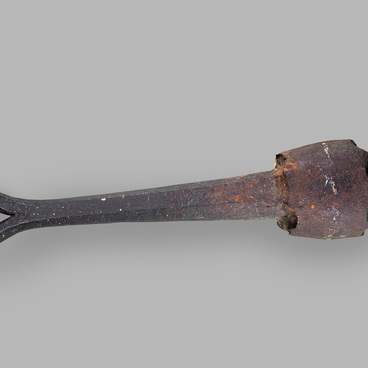Before the Diocesan Girls’ School was established in Nizhny Novgorod, the daughters of clergymen were seldom educated. Archbishop Iakov (Vecherkov) was the first to propose the idea of establishing a school for clergy girls in the diocese of Nizhny Novgorod.
On October 24, 1866 the Nizhny Novgorod Diocesan Girls’ School officially opened its doors to its first female students. It was a comprehensive secondary school. The girls studied for six classes, and the last year was devoted to revision of all that had been studied and preparation for final examinations.
The school’s primary mission was to provide religious and moral training for future wives of clergymen. At a later stage, the school pursued yet another goal: to offer a comprehensive education to daughters of the clergy, so that they could earn a living by their own labor and be useful to society and the church. According to the charter of November 1, 1868, the girls who graduated from the course were entitled to become home tutors.
The subjects were taught in strict compliance with the educational goals of the charter in Nizhny Novgorod. The program of training was varied and substantial. Along with religious subjects like the Law of God, the Church Slavonic language, church singing, the girls also studied traditional school subjects.
A lot of attention was paid to needlework in this school. The girls were taught tailoring, manual and machine sewing, cross-stitch and satin stitch embroidery, and sewing and mending church vestments. In 1907 the school opened an additional seventh class, which was called “pedagogical”. All classes were large, 30–40 people or more. While in 1876 the school had 221 pupils, in 1910 there were 481.
Nearly 90 percent of the students came from the clergy. The rest were the daughters of honorable citizens — merchants and peasants, but there were no girls from noble and bourgeois families in the school. Girls entered the school at the age of 10–12 years old, and completed the course at 18–20.
This certificate belonged to Olga Saburova, one of the daughters of Evgraf Alekseevich Saburov, a deacon of the cathedral church in Sergach. She completed the full course of the Nizhny Novgorod School in 1911 and worked as an elementary school teacher.
On October 24, 1866 the Nizhny Novgorod Diocesan Girls’ School officially opened its doors to its first female students. It was a comprehensive secondary school. The girls studied for six classes, and the last year was devoted to revision of all that had been studied and preparation for final examinations.
The school’s primary mission was to provide religious and moral training for future wives of clergymen. At a later stage, the school pursued yet another goal: to offer a comprehensive education to daughters of the clergy, so that they could earn a living by their own labor and be useful to society and the church. According to the charter of November 1, 1868, the girls who graduated from the course were entitled to become home tutors.
The subjects were taught in strict compliance with the educational goals of the charter in Nizhny Novgorod. The program of training was varied and substantial. Along with religious subjects like the Law of God, the Church Slavonic language, church singing, the girls also studied traditional school subjects.
A lot of attention was paid to needlework in this school. The girls were taught tailoring, manual and machine sewing, cross-stitch and satin stitch embroidery, and sewing and mending church vestments. In 1907 the school opened an additional seventh class, which was called “pedagogical”. All classes were large, 30–40 people or more. While in 1876 the school had 221 pupils, in 1910 there were 481.
Nearly 90 percent of the students came from the clergy. The rest were the daughters of honorable citizens — merchants and peasants, but there were no girls from noble and bourgeois families in the school. Girls entered the school at the age of 10–12 years old, and completed the course at 18–20.
This certificate belonged to Olga Saburova, one of the daughters of Evgraf Alekseevich Saburov, a deacon of the cathedral church in Sergach. She completed the full course of the Nizhny Novgorod School in 1911 and worked as an elementary school teacher.
